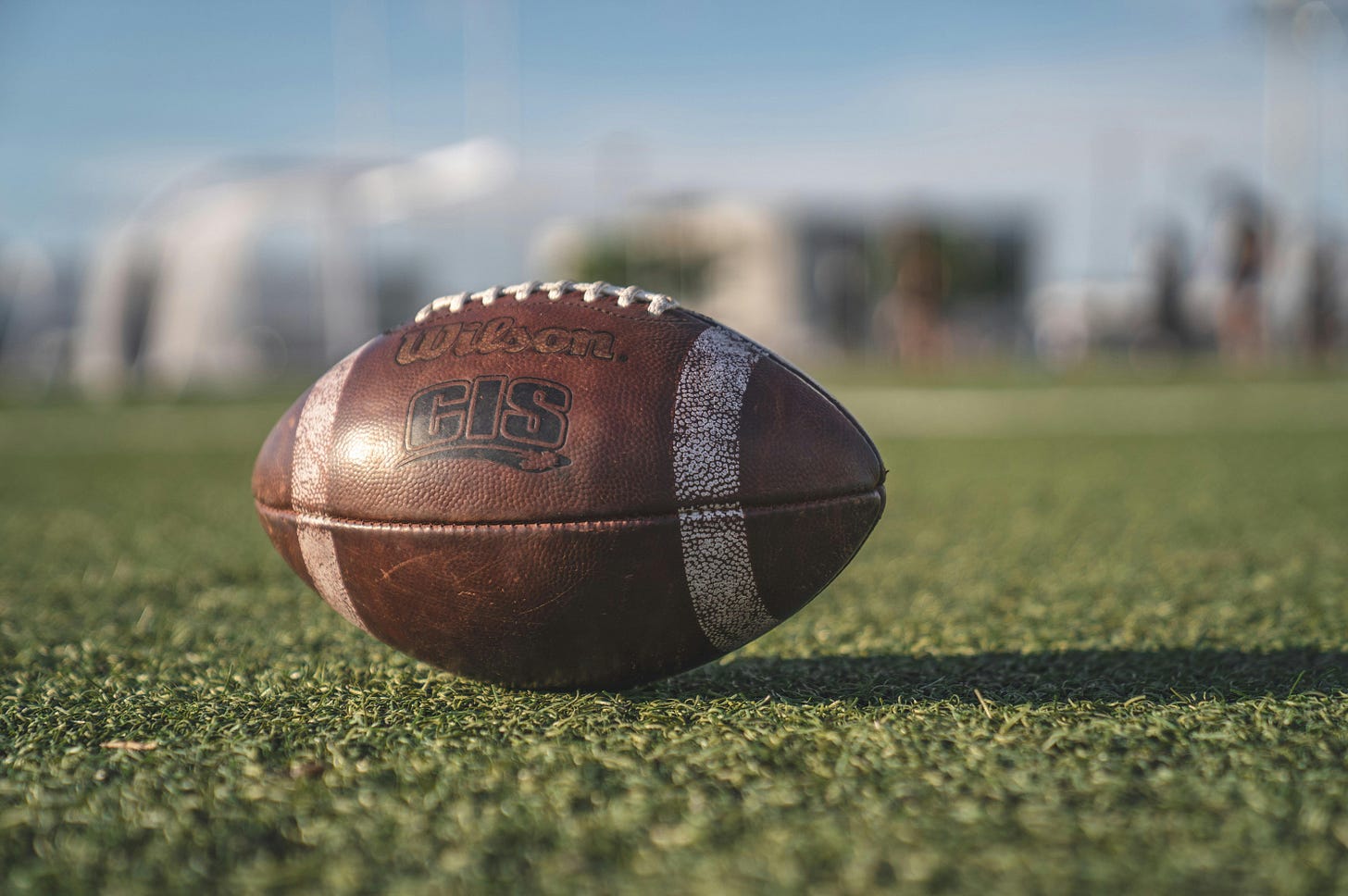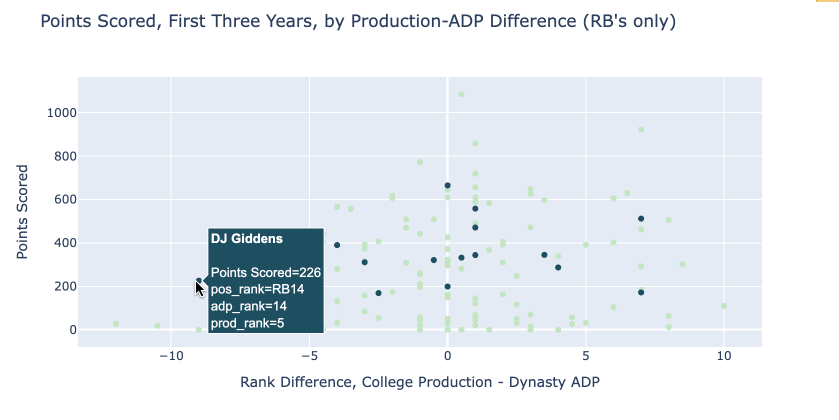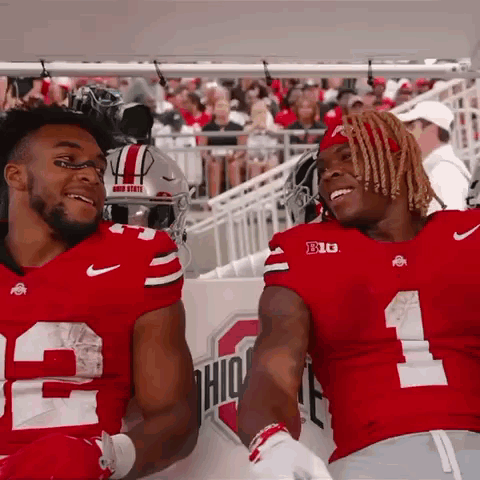The Fantasy Community vs. AI
What can ADP and predictive model disagreements tell us about player value?
Fantasy sports, like any kind of game, are all about being just a bit better—or smarter—than the next guy. That fantasy football is an incredibly stupid, luck-driven endeavor makes this doubly difficult, especially as tout-driven analysis from the world of gambling bleeds into the fantasy sphere. Like most things in today’s uber-online age, where people are increasingly data-savvy, the advantage lies in the margins.
But how do we leverage this data, already pored over by thousands of heavily invested fantasy-football addicts? Well, in the case of dynasty fantasy football, there are areas where the market’s out of step with the data. By analyzing dynasty-league average draft position (ADP), I suspected that the fantasy community overrated certain players based on potential, when both scouts and analytics raised red flags.
Luckily, Next Gen Stats (NGS) just released a robust, easy-to-access trove of data: their Combine IQ database. It’s still a bit of a black box, with the Combine IQ site hinting that, for some positions, there are hidden factors even more predictive than NGS score. What the site does give us, however, is plenty to work with.
Analyzing Running Backs
It’s relatively easy, for example, to predict whether a college running back will thrive in the NFL. This is because his college production is, per NGS, the top predictor of NFL success. Intuitively, this tracks, since NFL teams usually draft a guy based on potential scheme fit and need. Thus, even if a productive college back has question marks, he’s likely headed to a situation conducive to sustained success.
Since NGS data is publicly available, however, what unique advantage can we gain? This is where Dynasty ADP helps: if we subtract ADP from a running back’s college production, we get cases where the fantasy community and analytics disagreed. The above graph (click to enhance) shows points RB’s scored—or, for 2025 RB’s (dark blue dots), are projected to score—over the first three years of their career.
The further you get from the center, the bigger the disagreement: analytics are more bullish on guys to the left, while the right side contains less-productive college backs who still got picked early. It’s a bit noisy, but the main takeaway is clear: when the two disagree, the fantasy community is often wiser than the NGS model.
Above are the biggest disagreements from 2016 to 2022, with 2025 backs thrown in as well. Kansas State RB DJ Giddens—expected to be the 14th running back taken in dynasty drafts—immediately stands out. Giddens may rise after the NFL draft, since I’m currently using Keeptradecut rankings to predict ‘25 ADP. Yet his possible future as a committee back—despite testing well at the combine—may be missed by the NGS algorithm, which only sees a very productive college back.
If guys like Giddens—whom analytics likes, but the fantasy community is sour on—often fail, then what about the converse? High picks who analytics hates often succeed, though it’s still a useful red flag. See Zamir White—a combine warrior drafted by a bad Raiders team—and Ty Davis-Price, one of many RB’s the 49ers over-drafted. Clyde Edwards-Helaire, whom analytics strongly disliked, is another cautionary tale (first in ADP, but sixth in NGS). While he produced some value, ask anybody who picked him over Jonathan Taylor if they’re happy with their decision.
The 2025 RB Class
Above are, more or less, are the “draftable” 2025 backs. Right away, we have two backs that pop in Quinshon Judkins and Trevor Etienne, both ranking as top-20 disagreements in our sample. Etienne’s easy to explain, with his last name carrying his ADP. After the NFL Draft later this month, there’s a decent chance his stock drops.
Judkins is trickier, since other models like ESPN’s BackCAST are also low on him. BackCAST penalizes players sharing backfields, since a truly talented back should earn most of the carries. Still, both Judkins and teammate TreVeyon Henderson could succeed: BackCast is still high on Judkins, his lower rank more about the quality of this RB class. My own projections, too, see Judkins having star potential.
Lastly, we have RJ Harvey, an divisive back out of UCF who, as the chart shows, the fantasy community is lower on than the NGS model. Some experts see a committee back, plagued by subpar vision. Durability concerns abound, too; while his potentially explosive profile is like catnip to fantasy players, he could be another cautionary tale where intangible, hard-to-codify football knowledge trumps deceptive college stats.
Summary
If there’s one thing I want to make clear, I still think the NGS production-based model is really good. This was more about trying to find blind spots in fantasy football analysis, which I think we did. At the very least, we’ve covered some new angles to consider when you’re handing in the proverbial card in your dynasty draft.
Do I think the findings here should be followed religiously? Probably not; the best strategies are still the obvious ones, like trading back, or taking players who fall. Yet it can, hopefully, help you sleep better at night, letting you take some late-round guys off your board, or assuaging concerns about your early-round picks flopping.
Anyway, I think this is more than enough ink spilled on running backs. Check back in the coming weeks for a similar post on the 2025 Wide Receiver class, as well as a deeper breakdown of what stats-based thresholds prospects need to clear.








